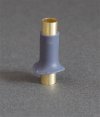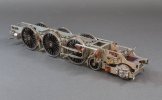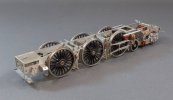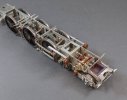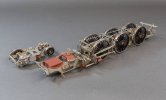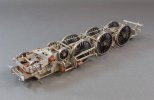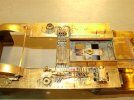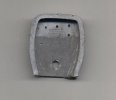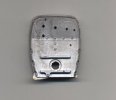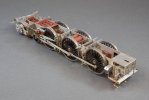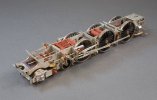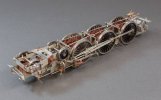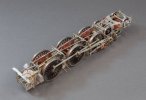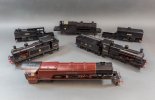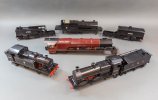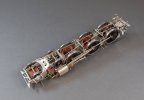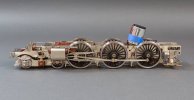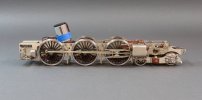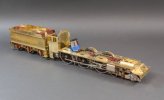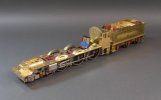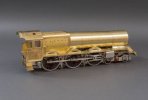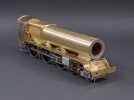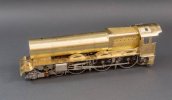Richard Gawler
Western Thunderer
Well, as it happens I had a choice of two chimney castings. This was because the manufacturer of the kit had sent me an extra one for an earlier project, free of charge, and I found it a little too large for the model.
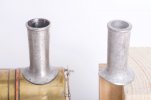
I do try to use the right words and to keep my posts brief (honest!) but my "fettling" means boring out the casting to make the chimney look hollow all the way down, tapering the top to make it look like it was made from a thinner material, working the skirt to get the best fit I can manage onto the smokebox, and inserting a peg to let me fix it to the loco. I did put a lot of care into this casting, but my two hours this time might be one hour next time; the boring was especially slow because I was half expecting the casting to tear itself apart.
My own purpose here (as in fitness for) is to be happy. This is a somewhat fluffy and undefined sort of a thing, it's not to do with a shed layout or a garden railway or even my own 7 mm home layout when I decide to start building it, but it does include metalwork, model trains, learning new skills, taking a photograph to send to distant friends, running on a club layout, hauling a train, and being able to tell myself I have made the most of the kit I have bought. These purposes are surely very different to those of the professional model maker, but valid all the same.

I do try to use the right words and to keep my posts brief (honest!) but my "fettling" means boring out the casting to make the chimney look hollow all the way down, tapering the top to make it look like it was made from a thinner material, working the skirt to get the best fit I can manage onto the smokebox, and inserting a peg to let me fix it to the loco. I did put a lot of care into this casting, but my two hours this time might be one hour next time; the boring was especially slow because I was half expecting the casting to tear itself apart.
My own purpose here (as in fitness for) is to be happy. This is a somewhat fluffy and undefined sort of a thing, it's not to do with a shed layout or a garden railway or even my own 7 mm home layout when I decide to start building it, but it does include metalwork, model trains, learning new skills, taking a photograph to send to distant friends, running on a club layout, hauling a train, and being able to tell myself I have made the most of the kit I have bought. These purposes are surely very different to those of the professional model maker, but valid all the same.

 ) if kit makers do not sort this out the people will probably still leave anyway. RTR is showing the way to more detailed models, the internet is awash with more fidelity and detailed models, this is now what people want and the kit market offers subjects that will probably never be made in RTR. That means some tough choices for people and given the rise in demand for fidelity and detail then their footsteps may well reshape the market.
) if kit makers do not sort this out the people will probably still leave anyway. RTR is showing the way to more detailed models, the internet is awash with more fidelity and detailed models, this is now what people want and the kit market offers subjects that will probably never be made in RTR. That means some tough choices for people and given the rise in demand for fidelity and detail then their footsteps may well reshape the market.